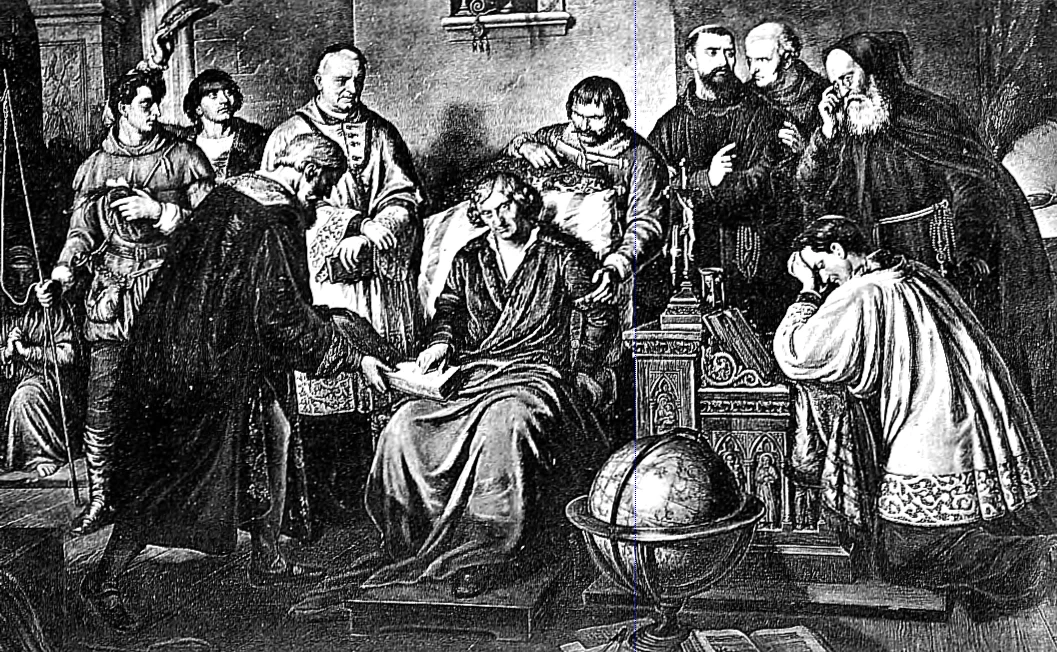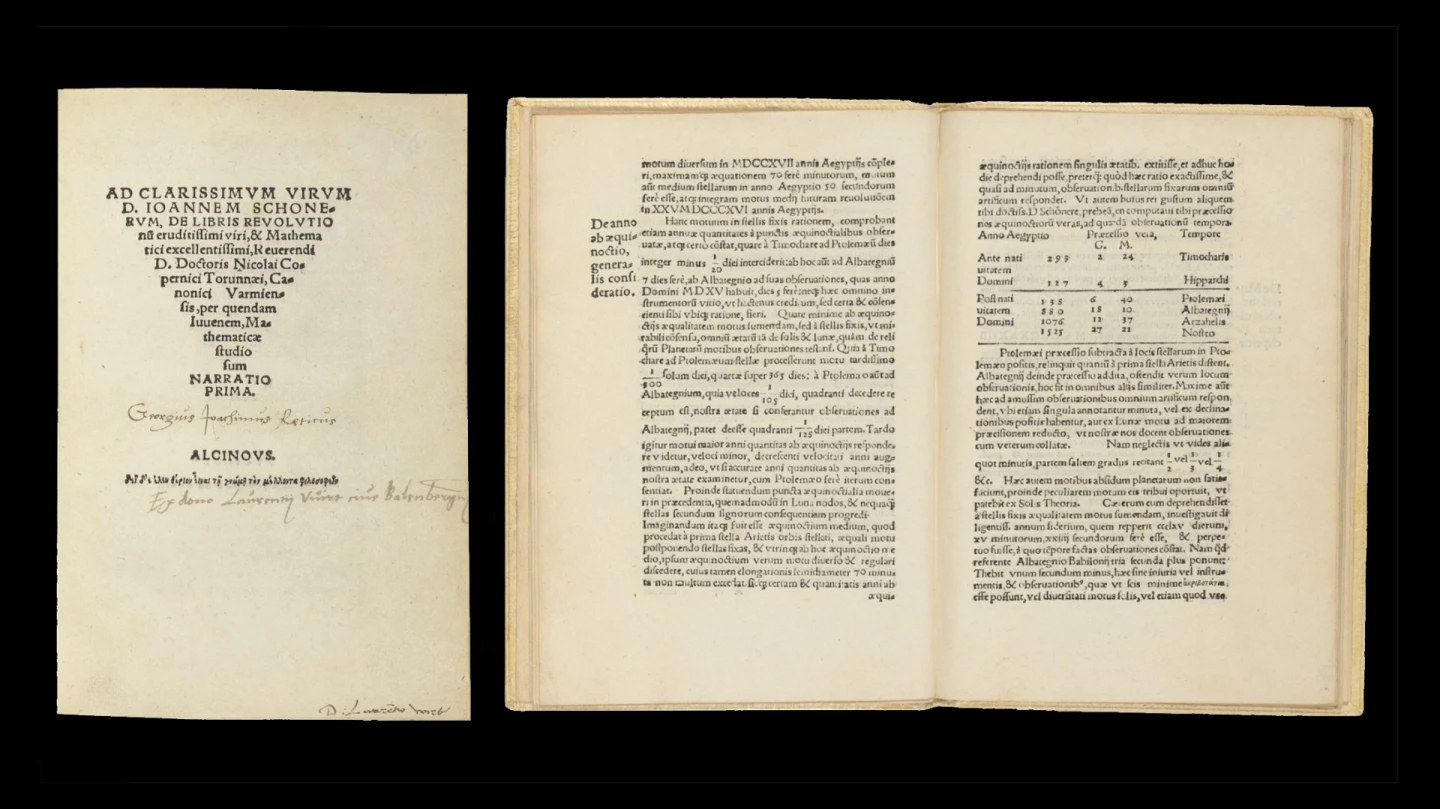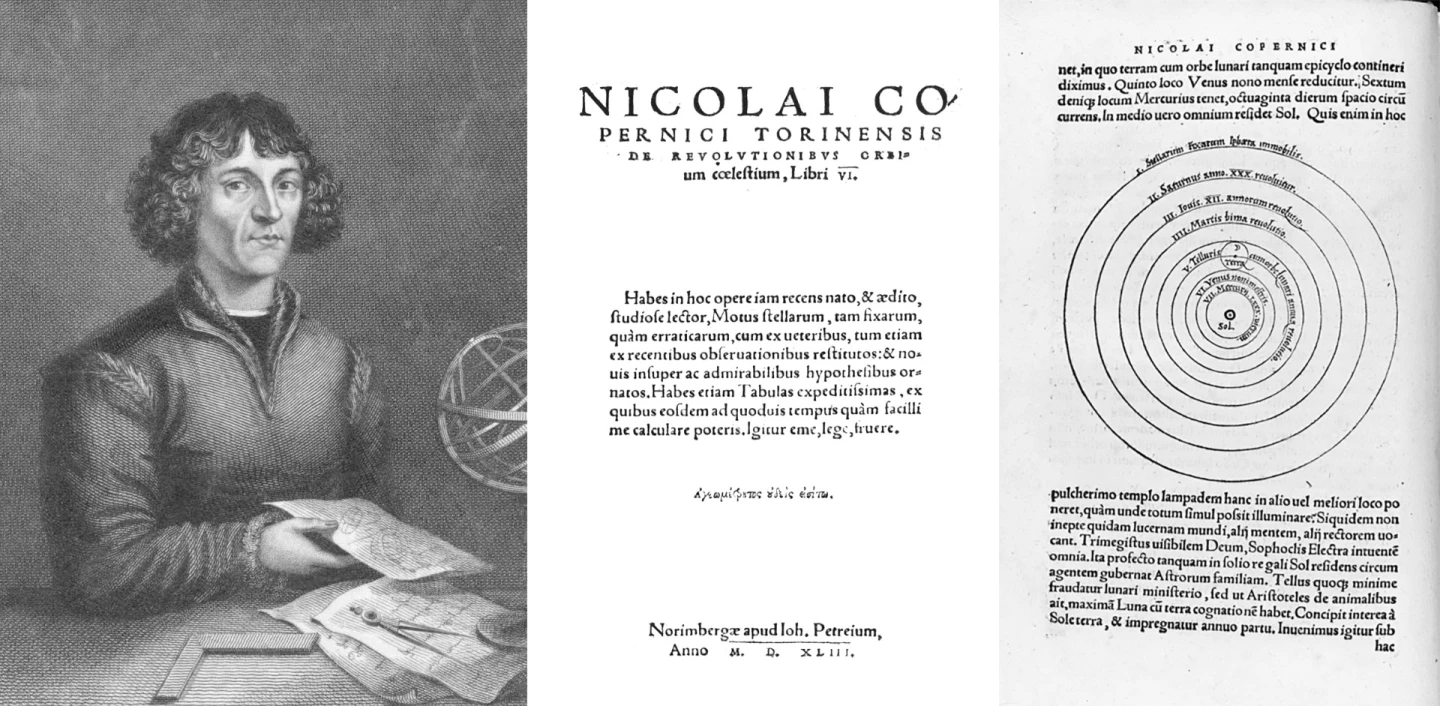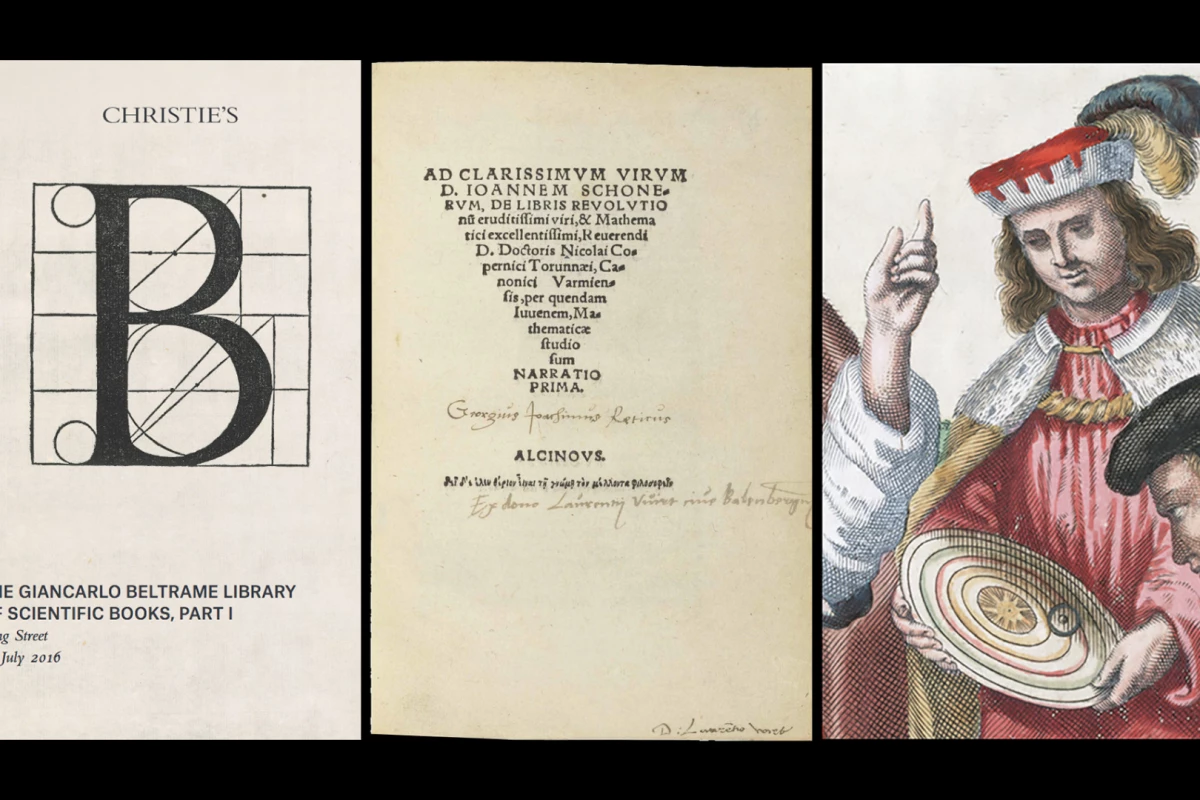Christies will auction a work of considerable scientific gravitas on July 13 in London. It is a first edition of the first printed book to propose that the Earth revolved around the Sun.
De Libris Revolutionum Eruditissimi Viridoctoris came not from Nicolaus Copernicus, but from his only student, Georg Joachim Rheticus, and when published in 1540, provided the momentum needed for Copernicus to finally have his landmark De revolutionibus orbium coelestium published in 1543.
Rheticus (1514-1574) published this first book on the subject based on his studies under Copernicus, all the while imploring his master to finally publish the master work which had been finished for 25 years.Copernicus resisted publishing De revolutionibus orbium coelestium for 30 years due to his fear of the Catholic Church, but when Rheticus published this book in 1540, Copernicus finally gave Rheticus the go ahead to publish the major work for him.

Rheticus is referred to as the "only student" of Copernicus, but given they worked together for many years, understudy might be a better description of the relationship, as Rheticus prepared the De revolutionibus orbium coelestium Copernicus' manuscript for printing, and the famous illustration above shows the finished and printed book being given to Copernicus on his deathbed.

The copy of De Libris Revolutionum Eruditissimi Viridoctoris is expected to sell for between £1,200,000 and £1,800,000which due to Brexit, is a lot cheaper in US dollars this week at an estimate that translates into just $1.6 to $2.4 million. We expect it will considerably exceed its estimate as the last time a copy came to auction was at a Sotheby's New York auction in November, 1989.
We've been following the scientific manuscripts and instruments market since we began, and we have maintained for many years that the scientific book and instrument marketplace is considerably undervalued by comparison to many other auction marketplaces.
This book is a landmark work and if it sells for the mid-point of its ultra conservative estimate, $2 million, it will become one of the top 20 most valuable scientific documents ever sold.

Even the most valuable first edition copy of his master's master work De revolutionibus orbium coelestium only achieved $2,210,500 at a Christie's (New York), June, 2008 auction.
The Rheticus book is just one of an outstanding array of important books from the Scientific Library of Giancarlo Beltrame, and what we're seeing at this auction is only half the collection, so given the extraordinary depth and breadth on display, we can't wait for the second half.
Giancarlo Beltrame took the helm of the family company, AFV Acciaierie Beltrame S.p.A, founded in 1896, and recast it as one of the main players in the global steel industry. Over the years, Beltrame has collected scientific instruments, rare books, autograph letters and prints.
His world-renowned scientific library includes some of the most important texts on astronomy (his passion, as can be seen from the number of first editions relating to the science), geography, mathematics, technology and medicine, but also philosophical works, esoteric texts and humanist literature.






